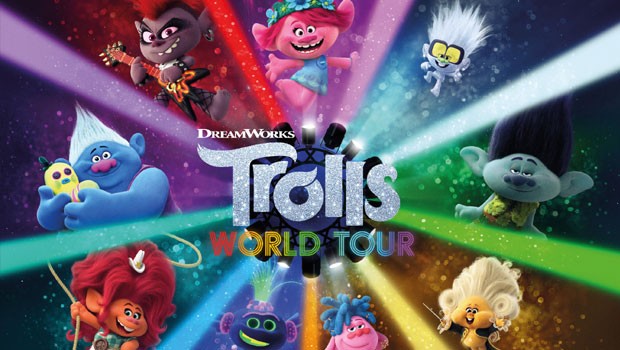Analyst: More opportunity for premium VoD experimentation
May 1, 2020
The team at Ampere Analysis publishes a weekly podcast discussing the impact of the Coronavirus pandemic on the entertainment industry. These sessions include the latest forecasts and projections which are being calculated by the expert team as the situation evolves. In this fifth episode, the team discussed premium VoD and its impact on theatrical releases, AT&T’s Q1 results and how pay for TV services are keeping and gaining customers in lockdown.
Premium VoD versus theatrical release
- To understand the impact of lockdown on movies that were set for theatrical release but have been published on premium VoD, Ampere used YouTube trailer views as a predictive factor.
- Titles expected to gain the very largest international box office revenues have not been released on PVoD. Ampere found that the box office titles expected to make roughly over $700 million globally were being delayed rather than being released on PVoD. These big money earners include Wonder Woman 1984, Disney’s Mulan and the latest Bond movie, No Time to Die.
- Slightly lower-earning major releases (between $400 million and $700-750 million) have been split between being pushed onto PVoD, or delayed.
- Genre is a big factor in this decision. In the US, one third of households go to the cinema and buy digital movies online, and these homes are more than 40 per cent likely to have young children. This is the sweet spot for PVoD titles now.
- Almost every major studio release that was expected to earn in the $100 to $300 million range was published straight to PVoD.
- Trolls World Tour has made $100 million so far through its PVoD release, compared to the original Trolls movie which earnt just over $150 million at US box office. However, due to the higher proportion of revenues a studio receives via the PVoD model, NBC has made more money in the US from this release. So despite a lower overall gross revenue than cinema, PVoD has been more profitable for NBC.
- In markets such as the US, UK and across Europe, digital transactions are more common and PVoD is a viable model. However, nearly 40 per cent of all current box office revenues come from markets such as China, Brazil and India, where digital transactions are dwarfed by box office. So for big international releases, a PVoD model is unlikely to be adopted in all major markets.
- We wait to see the long-term impact of lockdown, but it is likely that some cinema chains will close, while social distancing will limit audiences for a period of time. This creates a window of opportunity for further PVoD experimentation.
- Longer-term, having a viable alternative to cinema in many larger markets will create pressure on cinema chains – which studios may use to try to gain a bigger portion of box office receipts.

AT&T’s Q1 results indicate the industry-wide impact
- The positives for AT&T have been that the parts of their sector have shown strong resilience to the current crisis.
- High-speed broadband is up by 200,000+ subscribers this quarter, growing higher value customer subs and revenues
- The negative impact has been seen in some of the business units within its WarnerMedia division
- Its linear broadcasting network, Turner, has seen a significant downturn of 24 per cent in ad revenue compared to a year ago, with the hiatus of sports and the cancellation of the NCAA basketball tournament as a major contributor to the decline.
- In the US, although we have seen viewership up on pay-TV operators, there is an underlying problem of a decline in subscribers. AT&T has lost just over 900,000 subscribers across their pay-TV operations.
- This is in part due to the high cost of pay-TV, especially in this environment where economic hardships are hitting households hard.
Pay for TV services are keeping the customer satisfied
- With so many now spending their time inside, there’s been a noticeable extension in benefits offered by pay for TV services.
- These incentives offered for customer signup and acquisition appear to be translating into increased consumption.
- Quibi has offered a free 90-day trial, which has successfully delivered 2.7 million downloads; Showtime has extended its free trial from one week to one month; and Starz has reduced its OTT sub service from $9 to $5 a month, driving 142 per cent increase in new signups.
- We know that young people, especially the 16 to 34 age group, have been increasingly shifting away from linear television, but there are signs that this group may be shifting back.
- Sky says that 16-34 year olds are watching 45 per cent more TV currently – that’s an extra 85 minutes per day. ITV is suggesting a significant increase in 16-34 year old viewers, particularly around morning shows such as Good Morning Britain.
- Older people however are increasingly moving over to SVoD services. Ampere’s consumer research shows a rise in subscriptions taken by 45-64 year old from around 40 per cent to almost 70 per cent in the past three years (and Ampere expects this may be even higher during the lockdown).
- However, we are anticipating a potential reduction of TV consumption after the end of lockdown as viewers reach a level of ‘peak-consumption’.
Guy Bisson at Ampere Analysis says: “As the pandemic continues, the impact on the entertainment industry evolves and deepens. Our team is working hard crunching data to update our forecasts and we’ll share these in future podcasts as we have them. These figures are subject to change and we will update them as the situation develops. Having access to the latest trends, forecasts and expert opinion is key for all the players in the industry as we make sense of what is happening now in this rapidly changing situation and discuss what we can expect in the future. Don’t forget to sign up for the next issue.”
